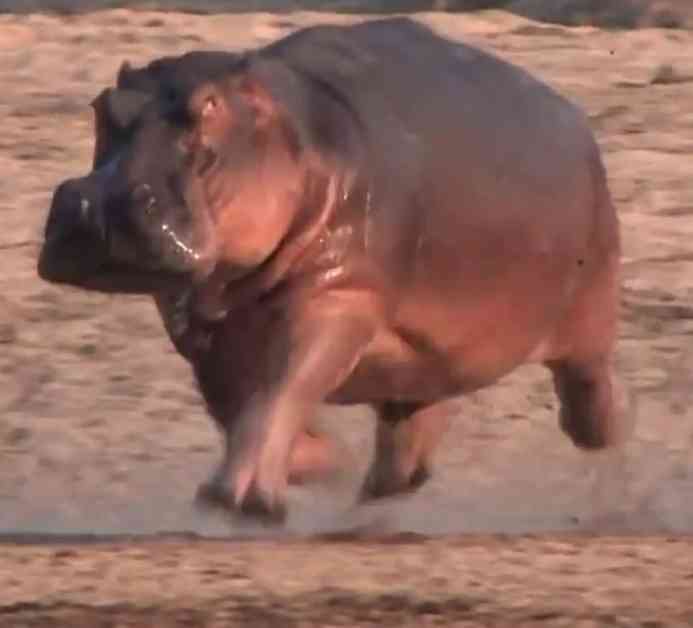Hippos are known for their massive size and bulky appearance, but recent research has revealed surprising facts about their speed and agility. Scientists at the Royal Veterinary College discovered that hippos can trot at high speeds, lifting all four feet off the ground similar to a galloping horse. This phenomenon occurs during their fast chases to protect their territory from rivals, showcasing their athletic abilities despite their heavy build.
Despite their intriguing characteristics, studying hippos up close is a challenging task due to their aggressive nature and preference for nocturnal activities. These two-ton creatures spend most of their time in water, making it difficult for researchers to observe them in their natural habitat. However, researchers at the Royal Veterinary College had the opportunity to study captive hippos in England, providing valuable insights into their movement patterns.
By analyzing footage of the hippos in motion, researchers found that hippos can trot using a diagonal leg movement, contrary to the previous belief that they walked in a standard quadrupedal gait. This discovery highlighted similarities between hippo and horse movements, challenging existing perceptions about their locomotion. The ability of hippos to become temporarily airborne while running at high speeds further emphasizes their agility and unique capabilities.
The findings of this study have opened up new possibilities for future research, particularly regarding the locomotion of different hippo species. Reports of pygmy hippos being able to gallop raise questions about the locomotor abilities of baby hippos and whether they share similar traits with adult hippos. Further exploration into the movement patterns of hippos could provide valuable insights into their behavior and evolutionary adaptations.
Overall, the study conducted by the Royal Veterinary College sheds light on the remarkable speed and agility of hippos, challenging stereotypes and expanding our understanding of these fascinating creatures. The findings have been published in the journal PeerJ, paving the way for future investigations into the locomotion of hippos and other related species.


